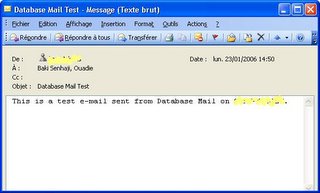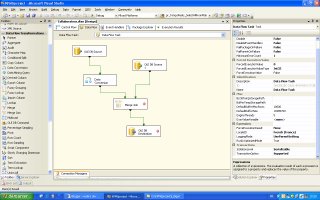SQL server 2005 by default give the nchar(10) as the type of my field, that mean a fixed string, for exemple '123' will be fill by bancs to complete the 10 positions of the fiels. I use the varchar because i don't want to do a trim() to my string. Here is some sql famous types :
bigint Integer data from -2^63 through 2^63-1
int Integer data from -2^31 through 2^31 - 1
smallint Integer data from -2^15 through 2^15 - 1
tinyint Integer data from 0 through 255
bit Integer data with either a 1 or 0 value
decimal Fixed precision and scale numeric data from -10^38 +1 through 10^38 -1
numeric Fixed precision and scale numeric data from -10^38 +1 through 10^38 -1
money Monetary data values from -2^63 through 2^63 - 1
smallmoney Monetary data values from -214,748.3648 through +214,748.3647
float Floating precision number data from -1.79E + 308 through 1.79E + 308
real Floating precision number data from -3.40E + 38 through 3.40E + 38
datetime Date and time data from January 1, 1753, through December 31, 9999, with an accuracy of 3.33 milliseconds
smalldatetime Date and time data from January 1, 1900, through June 6, 2079, with an accuracy of one minute
char Fixed-length character data with a maximum length of 8,000 characters
varchar Variable-length data with a maximum of 8,000 characters
text Variable-length data with a maximum length of 2^31 - 1 characters
nchar Fixed-length Unicode data with a maximum length of 4,000 characters
nvarchar Variable-length Unicode data with a maximum length of 4,000 characters
ntext Variable-length Unicode data with a maximum length of 2^30 - 1 characters
binary Fixed-length binary data with a maximum length of 8,000 bytes
varbinary Variable-length binary data with a maximum length of 8,000 bytes
image Variable-length binary data with a maximum length of 2^31 - 1 bytes
cursor A reference to a cursor
sql_variant A data type that stores values of various data types, except text, ntext, timestamp, and sql_variant
table A special data type used to store a result set for later processing
timestamp A database-wide unique number that gets updated every time a row gets updated
uniqueidentifier A globally unique identifier
in SQL 2005 there is a new type :
XML Data Type XML data is stored as binary large objects (BLOBs) in an internal representation that allows efficient reparsing and some compression



